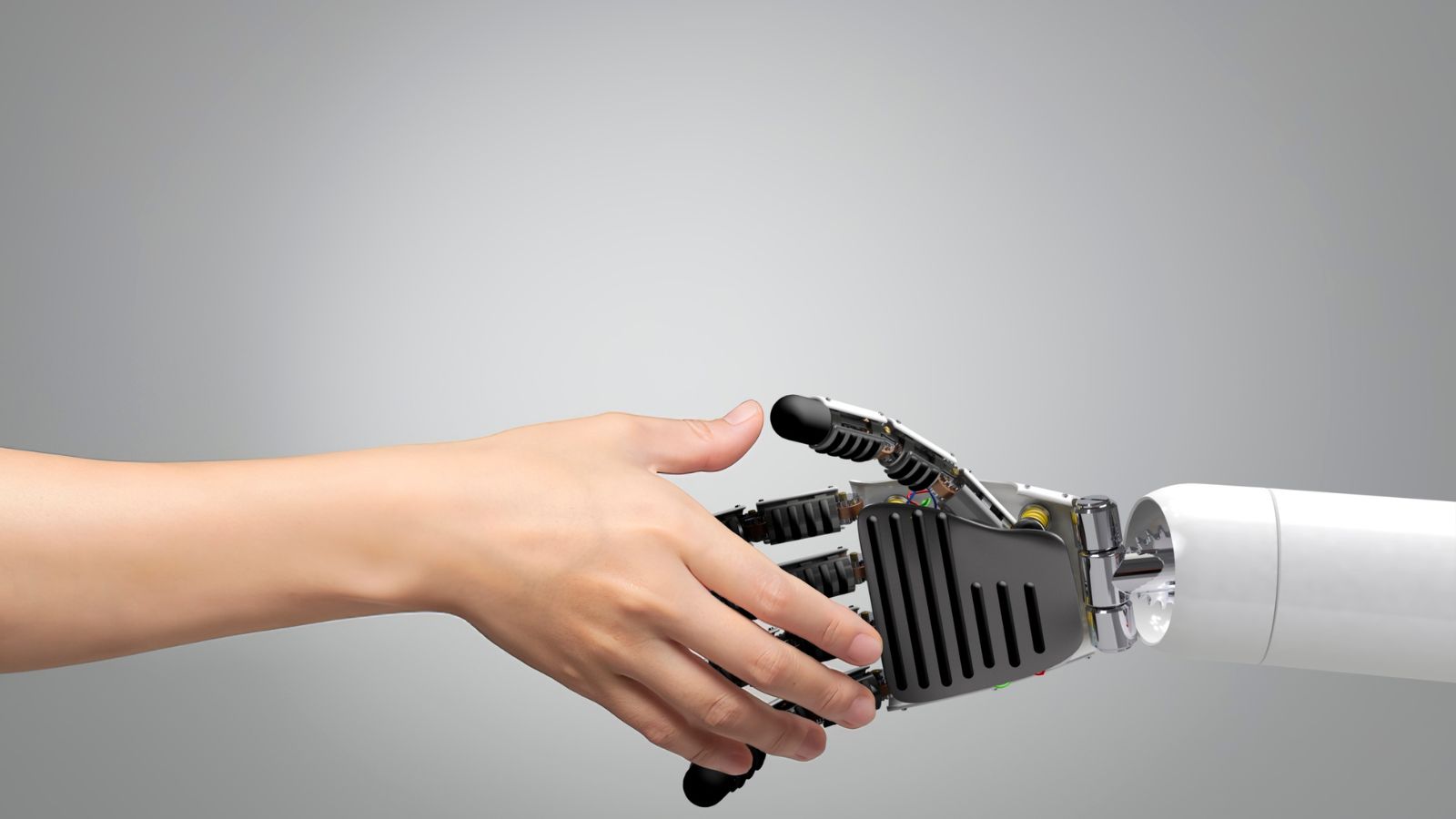AI customer service tools make it easy to offer cost-effective 24/7 support. But should you use them to replace your human team or is that a big mistake? Is AI-Only Support a Mistake? When to Keep Human Agents in the Loop.You can’t shake a tree in business these days without AI customer service tools falling out. Chatbots, virtual assistants, and automated ticketing systems are handling more inquiries than ever. In some cases, companies are looking to replace their human support teams altogether, hoping to maximize their savings.
But is this a wise choice in an era where customers still crave human interaction? After all, artificial intelligence is great at emulating emotions, but it can’t match a human’s emotional quotient. It misses social cues that are great relationship building tools. In addition, it doesn’t have the problem solving skills you need for complex inquiries.
Relying solely on AI for customer service can, therefore, backfire. You might be inviting miscommunications that frustrate your customers and erode trust. In this post, we’ll look at the risks of AI-only support and how to use AI in customer service effectively. We’ll also discuss the benefits of adopting a hybrid model.
Why You Can’t Rely Solely On AI Customer Service
AI Lacks Emotional Intelligence
AI is a lot like a toddler that’s learning to interact with the world. Like children, it needs to learn vital tasks first, before it can move on to the more airy fairy stuff like emotions. You need to teach a toddler what to call things before you teach them how to have a conversation. It takes children years to learn empathy, because they learn through experience.
AI can process language, recognize patterns, and respond in milliseconds. But emotions? That’s where it falls short. Many customers reach out because they’re frustrated, confused, or upset—feelings AI simply doesn’t grasp the way humans do.
Imagine someone contacts support about a defective product.
An AI chatbot might offer a refund or discount, but it won’t acknowledge their frustration. A human agent, however, can listen, empathize, and reassure the customer, turning a bad experience into a positive one.
Misinterpretations And AI “Hallucinations”
Even the most advanced AI customer service models get things wrong. Sometimes, they completely misinterpret a question or even generate bizarre, misleading responses—what’s known as an AI hallucination.
A customer asking about “account recovery” could get instructions for resetting a password when they’re actually dealing with fraud. AI might not pick up on that distinction, but a human agent would.
Limited Problem-Solving Skills
AI is great when it comes to easy tasks, like:
- Order tracking
- Account updates
- FAQs
Where it struggles is when an inquiry doesn’t fit neatly into its programmed responses. Technical troubleshooting is a good example.
A chatbot might suggest you reboot your device or reinstall the software. But if these steps don’t solve the problem, like when there’s a bug, AI can’t manage. While machines are clever, they work by detecting patterns rather than using real reasoning and problem solving.
By contrast, a human agent would ask the right questions, gather details, and put the problem in front of the right person. AI wouldn’t know what to ask.
Customer Frustration With AI Loops
Everyone’s had this experience. AI makes a recommendation that doesn’t quite fit, so you have to ask your question again. This starts an endless loop because the machine won’t let us talk to a real person. It’s one of the biggest complaints about AI-only support.
To save money, some businesses make it difficult to reach a human agent, forcing customers to navigate layers of automation.
The result? Frustration, bad reviews, and even lost customers.
When To Keep Human Agents In The Loop
Complex Technical Issues
Tech problems often require troubleshooting beyond AI’s capabilities. While AI customer service tools can suggest common fixes, human agents are essential when issues don’t fit a predefined pattern.
For example: A business owner reports an intermittent software bug affecting operations. AI can understand that there’s a problem, but it takes a human to:
- Ask the right questions
- Collect logs
- Identify patterns
- Escalate the issue as necessary
AI would hardly think that there was a bug. It’s not what its training taught it.
Financial And Legal Matters
In these industries, you need to be accurate and sensitive. AI is great at the first, but lousy at the second. In some cases, the law is somewhat subjective, whereas AI deals in absolutes. With finances, things aren’t always as they seem.
For example: Your customer disputes a bank transaction. AI is likely to deny the claim because it works on strict rules. A human agent can take a look and see that it’s potential fraud. They could use their judgement to resolve the matter more fairly.
Emotionally Sensitive Conversations
There are times when your customers need an empathetic ear. AI can’t help because it doesn’t have emotions, let alone understand them.
For example: A grieving customer contacts support to close their deceased spouse’s account. AI would explain the processes without any compassion. A human agent would offer condolences and treat them more kindly. This is something your customer won’t forget.
VIP And High-Value Customers
People paying a premium expect you to fuss over them. If you only let AI deal with them, the interactions may feel impersonal. Worse yet, the person may feel you’re ignoring them. This is counter-productive when you rely on strong customer relationships.
For example: A high-spending customer contacts a luxury brand about a delayed shipment. AI might give a standard tracking update, while a human agent could offer a personalized apology, priority shipping, or a loyalty perk.
Unusual Or Open-Ended Requests
AI customer service tools work best with structured data. If a customer’s request is outside its programmed responses, AI can struggle to provide a helpful answer.
Example: A customer asks if a subscription service offers a feature that isn’t mentioned in the FAQs. AI might say, “Feature not found.”
A human agent can check internally, provide an informed response, and even suggest workarounds.
Creating A Balanced AI-Human Support System
Make Escalation To Humans Seamless
AI should be the first line of support—but it needs a clear handoff process. If a customer expresses frustration, asks the same question multiple times, or presents a complex issue, AI should automatically transfer them to a human.
For example: A chatbot handling a refund request detects frustration in the customer’s responses. Instead of looping back with the same solution, it routes them to a live agent.
Give Customers A “Talk To A Human” Option
Nothing is more frustrating than hunting for a way to reach a real person. A clear “Talk to a Human” button—whether in chat, email, or phone support—can reduce customer irritation and prevent escalation.
Train Agents To Work Alongside AI
AI shouldn’t replace human agents—it should support them. AI can summarize the pertinent details, but you need a human to use those insights wisely.
For example: AI picks up that the customer’s frustrated and suggests that the agent apologizes. The human agent can take it a step further, personalizing the response based on the customer’s history and concerns.
Monitor AI Performance And Customer Feedback
AI for customer service isn’t something you set up and let loose. Businesses should track how often AI misinterprets questions, when escalations happen, and how satisfied customers are with AI-handled interactions.
Key metrics to watch:
- AI resolution success rates
- Escalation frequency to human agents
- Customer satisfaction scores (CSAT)
- Common AI failure points
Use AI To Assist Agents, Not Just Customers
AI shouldn’t just handle customer interactions; it should also support your team. These tools can offer useful insights that your team can take to the next level. For example, the AI can suggest solutions for your client, but the agent tweaks these to add warmth and context.
Conclusion
AI customer service tools are getting better, and they’re very useful. But they make mistakes and aren’t ready to be in the wild alone yet. Use them to deal with simple, repetitive tasks, so your team can deal with the meatier issues.
When you get this right, you give your clients the ideal balance between AI efficiency and human empathy. This makes it easy to build strong relationships and a loyal fan base.



